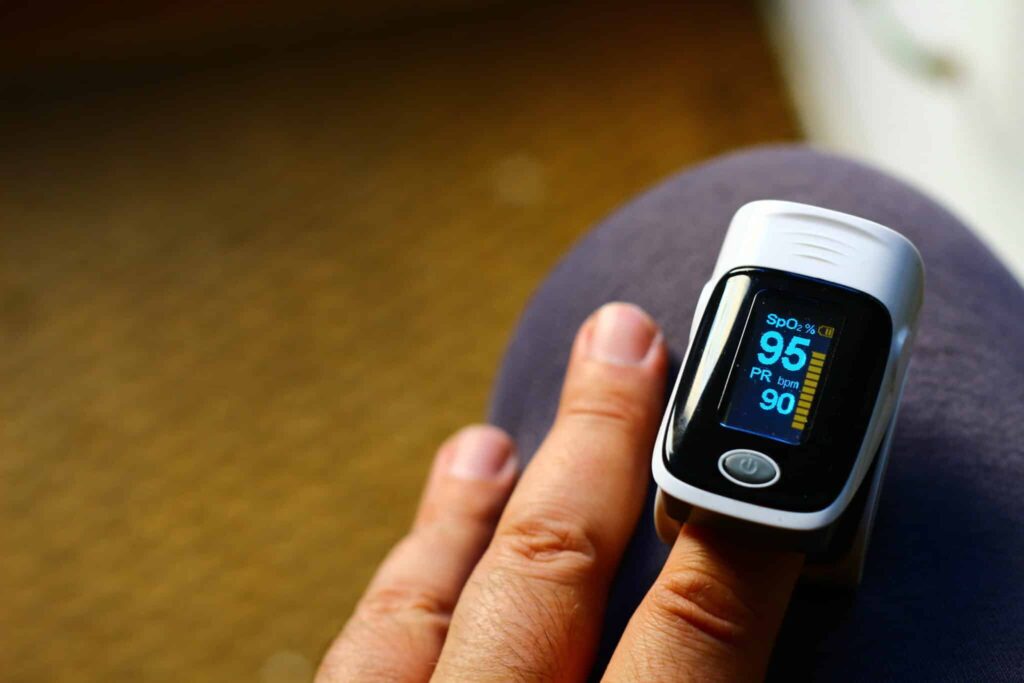
- Blogs
Top 10 Tips for Ensuring Patient Safety with Reliable Pulse Oximeters
- July 24, 2024
- By admin
Pulse oximeters are tools utilized in healthcare facilities to continuously monitor non-invasive oxygen saturation and pulse rate readings of a patient. Such tools become very vital in assessing respiratory and cardiovascular health, especially in critical care and during anesthesia. For this reason, it is always important to ensure the reliability and accuracy of pulse oximeters in ensuring patients’ safety. Here’s how to ensure patient safety with reliable pulse oximeters:
1. Selecting High-Quality Devices
First and foremost, patient safety begins with the selection of quality pulse oximeters. The devices should be purchased from reputed manufacturers adhering to international standards, such as those regulated by the FDA or CE. High-quality pulse oximeters are more likely to provide very accurate and reliable readings, which often form the mainstay for patient care decisions.
2. Calibration and Maintenance of Oximeter
Calibration and maintenance of pulse oximeters are quite necessary for the accuracy of results. Through calibration, one is assured that the readings obtained are correct about the actual oxygen saturation in blood. Routine maintenance, which includes checking of sensors, replacement of worn-out parts, and healthy batteries, also prevents device malfunctioning and inaccuracies.
3. Correct Placing and Usage of Sensors
Commonly incorrect is the wrong positioning of the sensor. The sensor should be rightly placed over a well-perfused area, normally at the tip of the finger or earlobe, and it should not be applied too tightly but with a snug fit. One has to avoid applying the sensor on areas of the nail polish, artificial nails, and cold extremities. These have a tendency to reflect light in such a way as to interfere with the reading. The Healthcare staff should be appropriately educated in using the sensor for appropriate results.
4. Limitations and Interferences
Although pulse oximeters are accurate devices, there are some interfering factors. For example, low perfusion, patient movement, ambient light interference, and the presence of some dyes or pigments in the blood can modify the accuracy. The health professional needs to be aware of the limitations of these and use his or her clinical judgment in interpreting readings. In cases of doubt, corroborate pulse oximeter readings with arterial blood gas analysis.
5. Periodic Education for Health Care Providers
There needs to be constant training on the correct use of pulse oximeters and accurate interpretation of readings. Pre-service and in-service training on device operation, its limitations, appropriate placement of sensors, and troubleshooting common problems is imperative. Keeping health personnel abreast of the latest standards and practices ensures patient protection and optimum use of the device.
6. Monitoring and Quality Assurance
Routine monitoring and quality assurance maintain the pulse oximeters’ accuracy and reliability. This includes periodic performance checks against other monitoring methods and the need to respond to differences or abnormalities in readings. A robust quality assurance program will ensure that pulse oximeters remain reliable and accurate.
7. Patient Education and Communication
Patient education regarding the aim and function of pulse oximeters also becomes a critical factor for their proper use. The clear communication will help the patients understand that they should remain still during measurement and the repeated readings that are required for some patients. It would be easier to have an informed patient cooperate and allow for precise readings.
8. Integration with Electronic Health Records:
This will ensure that pulse oximeter data is appropriately recorded and easily accessible to the EHR for use by healthcare providers. At the same time, this kind of integration enables comprehensive monitoring, trend analysis, and timely interventions, raising the level of care provided to patients and promoting safety.
Conclusion
Reliable pulse oximeters are crucial for monitoring patient health and ensuring safety, especially in critical care settings. By selecting high-quality devices, ensuring proper usage, understanding the limitations, providing regular training, and maintaining a robust quality assurance program, healthcare providers can ensure accurate readings and optimal patient care. Patient education and effective communication also play key roles in ensuring the reliability and effectiveness of pulse oximetry.
Ensure patient safety with our range of high-quality pulse oximeters. Contact us today to learn more about our reliable monitoring solutions.Upgrade your pulse oximetry equipment with our range of high-quality devices. As a trusted medical equipment supplier in Dubai, we offer expert advice and solutions tailored to your healthcare needs.
Related Posts

Importance of Routine Medical Equipment Maintenance in Ensuring Patient Safety and Compliance.
Read More »
Medical Laboratory Excellence: A Complete Guide to Equipment Selection and Cost-Effective Planning
Read More »Explore Our Range
Visit our website to discover our full range of medical equipment in Dubai and see how Regal Medical Equipments Trading LLC can support your healthcare practice. Whether you’re upgrading your current equipment or need specialized tools, we offer exceptional products and unparalleled customer service to meet your specific needs.



